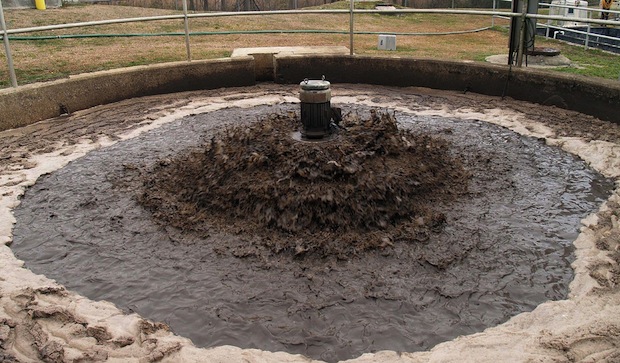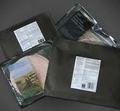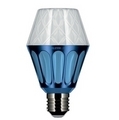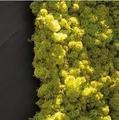FARM:London Creates an Urban Food Production Hub in Dalston
by: Inhabitat , 2011-08-23 18:00:10 UTC

Urban farming projects are popping everywhere! A derelict shop in Dalston, London, is yet another site set on urban rejuvenation with its innovative FARM: project. The project, which has transformed an entire four story space, is now home to an urban food ‘hub’ complete with a cafe, arts venue, mini ‘aquaponic’ fish farm, indoor allotments and rooftop chicken coops. Launched in 2010, FARM: is bringing the rural to the urban, with the intention of growing as much food as possible in every corner of the building.


Read the rest of
FARM:London Creates an Urban Food Production Hub in Dalston
Permalink |
Add to
del.icio.us |
digg
Post tags: city farming, converted urban farm, derelict converted farm, farm shop dalston, Farm shop london, urban farming london, urban gardening
Poop-Fueled Batteries May Be Available for Home Use in 5 Years
by: Inhabitat , 2011-08-23 18:20:31 UTC

Raw sewage stinks, but did you know it is actually a hot commodity? Gaseous wastewater has the potential to be converted into energy-packed biofuel, powering city facilities worldwide. Soon, that noxious wastewater you’ve held your breath over could help power your home appliances through microbial fuel cell batteries!




Read the rest of
Poop-Fueled Batteries May Be Available for Home Use in 5 Years
Permalink |
Add to
del.icio.us |
digg
Post tags: bioegas fuel cell, bioenergy, biofuel, Bruce Logan, raw sewage, renewable energy, wastewater treatment
Gregg Parsell’s ORIGIN Pendant Lamp Evolves Elegantly from Recycled Materials
by: Inhabitat , 2011-08-23 21:40:18 UTC

Designed from two very different and contrasting materials, ORIGIN is a two-part pendant lamp made from natural wood and partially recycled Corian®. Its creator is furniture and product designer Gregg Parsell, a recent graduate from Nottingham Trent University in England. Strolling through this year’s New Designers exhibition in London, Inhabitat spotted this contemporary luminaire, which boasts both an eco-friendly origin and a sleek, modern look.





Read the rest of Gregg Parsell’s ORIGIN Pendant Lamp Evolves Elegantly from Recycled Materials
Permalink |
Add to
del.icio.us |
digg
Post tags: british design, corian, Decorative Objects, green home decor, green lighting, green materials, hanging lamp, hardwood, London, new designers 2011, Recycled Materials, Sustainable Materials
Rethinking Green Products by Re-Imagining Your Inputs
by: Greener Design, 2011-08-16 11:45:22 UTC
The auto industry is in upheaval now trying to radically reinvent our products to meet tough new fuel efficiency standards. But some of the lessons the industry has learned can be applied to any company thinking about sustainability.

 Not Every Green Product Can Be a World-Changer
Not Every Green Product Can Be a World-Changer
by: Greener Design, 2011-08-17 07:57:02 UTC
Green innovators and marketers can be guilty of hyping every green innovation as the best solution for every need. There are the problems with forcing niche products on the mass market, and sometimes aiming low is better.

 Home Phone Concept to keep family members connected
Home Phone Concept to keep family members connected
by: The Design blog, 2011-08-23 11:54:28 UTC
Jaspreet Kaur Walia:

Home Phone ConceptHome Phone Concept by Tom Hunt
Phones help us to get connected with our loved ones, both inside and outside the house. There was a time when fixed line phones acted as an important piece of equipment, which were used by all members of the house. But, the introduction of mobile phones changed the importance of this place of the house, shifting it to a not-so-important device. Tom Hunt has tried to revive the dying magic with his design named Home Phone Concept.
Picture Gallery
Home Phone Concept by Tom Hunt
The new-age concept makes good use of the internet connection that will help stay family members connected always. This comprises of a text messaging service which is used by members to effortlessly send messages to other people of the house, using the household internet connection or their personal phones. The overall design consists of an area where hand written notes can be left. It also has a slot to keep papers or letters. Home Phone Concept features a facility that will allow users to look up for numbers online.
Home Phone Concept is a simple device that will make sure that family members don’t feel disconnected under any circumstance. Leave personal notes or letters and make it a focal point of your household.
[Cheers Tom]


 Could Composting Toilets Save Cities Millions in Waste Water Treatment?
Could Composting Toilets Save Cities Millions in Waste Water Treatment?
by: TreeHugger Design, 2011-08-22 15:38:07 UTC
 Image credit: Biolet
Image credit: Biolet
From the
humanure approach of pooping in a bucket to the rough-and-ready
"tree bog" composting toilet, I've posted plenty of low tech DIY options for dealing with human waste. But my fellow TreeHugger writers, to their credit, have often had more ambitious, mainstream plans for saner sanitation. From
Read the full story on TreeHugger
Gorgeous Origami Dragon Tail Lamps are Folded from Simple Sheets of Paper
by: Inhabitat , 2011-08-22 19:06:21 UTC

Designer Kenneth Cobonpue recently debuted a gorgeous set of Dragon Tail Lamps, which look both dangerous and delicate at the same time. The lamps are made with chromed origami paper and they taper to small curve at the bottom resembling a prickly tail, brining an edgy twist to the soft glow of light they emit. Inspired by his homeland in the Philippines, Cobonpue integrates locally sourced organic materials into his designs including palms, seagrasses, bamboo, abaca, and rattan. His trademark hand-made techniques are reminiscent of his mother’s designs, who also owned and operated a well-known furniture and design company in the seventies. The lamps are available in white and parchment and come in various suspension and table varieties, making them fantastic focal points for modern interiors.
+ Kenneth Cobonpue
Via contemporist





Permalink |
Add to
del.icio.us |
digg
Post tags: dragon tail lamp, green interior design, green lighting, Kenneth Cobonpue, lamps, origami, origami lamps, recycled basket lamps
Four Cooking Stove Designs That Can Save The World
by: Inhabitat , 2011-08-22 20:43:52 UTC







Read the rest of Four Cooking Stove Designs That Can Save The World
Permalink |
Add to
del.icio.us |
digg
Post tags: alliance for clean cookstoves, BioLite, Burn Design lab, clean cookstoves, cooking fire, eco stove, Envirofit, green stove, Jiko Poa, low cost stove, Paradigm Project, rocket stove manufacturer, smoke inhalation, Stovetec, third world health, wood stove technology
Coming Soon: Batteries That Run On (And Clean) Used Toilet Water
by: fast company, 2011-08-22 19:10:57 UTC
Cleaning the dirty water from our drains and toilets is an expensive and energy-sucking task. A new fuel cell uses bacteria to remove grossness from the water and generate power at the same time.

Humans should have a little more respect for dirty toilet water. In recent years, wastewater has become something of a commodity, with nuclear plants paying for treated wastewater to run their facilities, cities relying on so-called "toilet to tap" technology, and breweries turning wastewater into biogas that can be used to power their facilities. Soon enough, wastewater-powered batteries may even keep the lights on in your house or, at the very least, in the industrial plants that clean the wastewater.
Environmental engineer Bruce Logan is developing microbial fuel cells that rely on wastewater bacteria's desire to munch on organic waste. When these bacteria eat the waste, electrons are released as a byproduct--and Logan's fuel cell collects those electrons on carbon bristles, where they can move through a circuit and power everything from light bulbs to ceiling fans. Logan's microbial fuel cells can produce both electrical power and hydrogen, meaning the cells could one day be used to juice up hydrogen-powered vehicles.
Logan's fuel cells aren't overly expensive. "In the early reactors, we used very expensive graphite rods and
expensive polymers and precious metals like platinum. And we've now
reached the point where we don't have to use any precious metals," he explained to the National Science Foundation.
Microbial fuel cells still don't produce enough power to be useful in our daily lives, but that may change soon--Logan estimates that the fuel cells will be ready to go in the next five to 10 years, at which point they could power entire wastewater treatment plants and still generate enough electricity to power neighboring towns. There may also be ones that use--and in the process-desalinate--salt water, using just the energy from the bacteria.
And if the microbial fuel cells don't work out, there's another option: Chinese researchers have developed a photocatalytic fuel cell that uses light (as opposed to microbial cells) to clean wastewater and generate power. That technology is also far from commercialization, but in a few years, filthy water will power its own cleaning facilities one way or another.
[Image: Flickr user DefMo]
Reach Ariel Schwartz via Twitter or email.












Comments by our Users
Be the first to write a comment for this item.